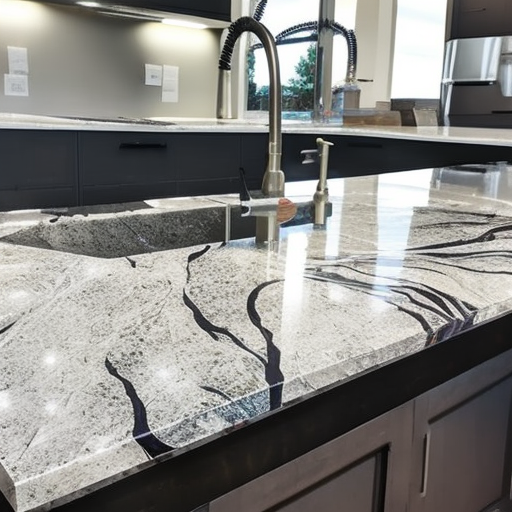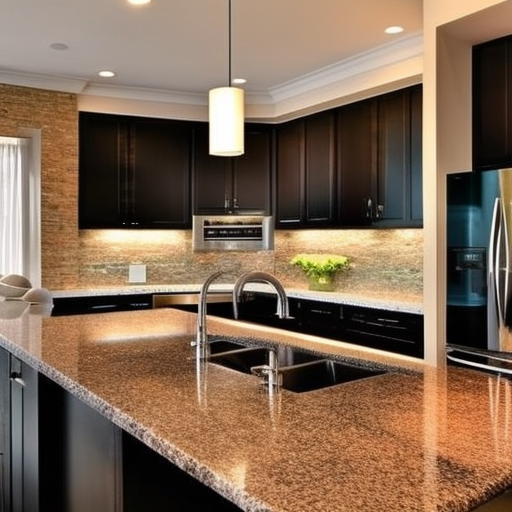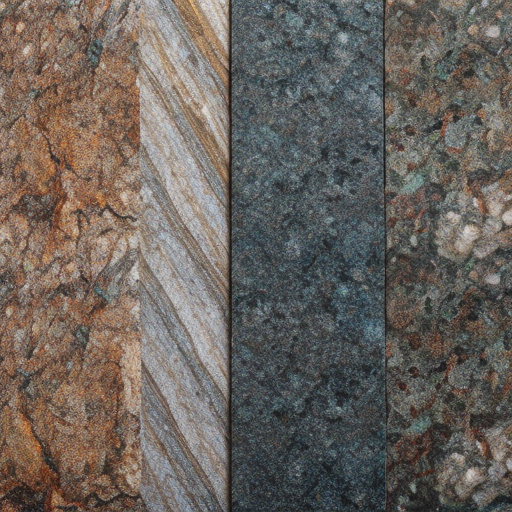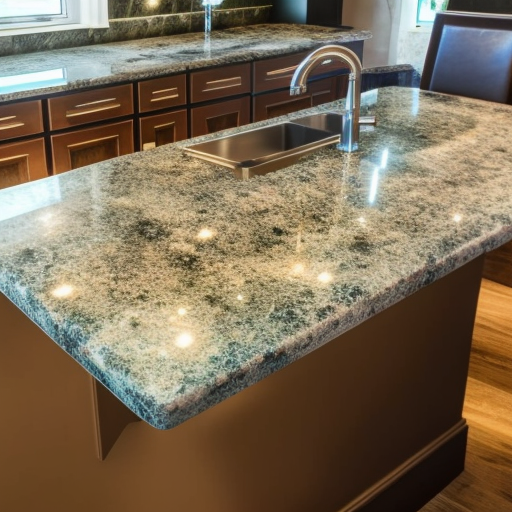Are you considering investing in granite countertops for your home? Before making a decision, it’s essential to understand the cost breakdown of this investment. In this article, we will provide you with a comprehensive breakdown of the factors that contribute to the granite cost. We will also evaluate the long-term investment potential of granite countertops and compare them to other options available in the market. By the end of this article, you will have a detailed understanding of the costs involved and the potential return on investment when it comes to granite countertops. So let’s dive in and explore the world of granite cost and investment breakdown.
1. "Understanding the Granite Cost: A Comprehensive Breakdown of Investment Factors"

Understanding the Granite Cost: A Comprehensive Breakdown of Investment Factors
Investing in granite countertops can be a significant decision for homeowners. While granite offers durability, beauty, and timeless elegance to any kitchen or bathroom, it’s essential to understand the various factors that contribute to the overall cost of this investment. By comprehensively examining the elements that impact the granite cost, homeowners can make informed decisions and ensure they get the best value for their money.
One of the primary factors that affect the granite cost is the size of the countertop area. The larger the surface area, the more granite material will be required, leading to higher expenses. Additionally, the complexity of the countertop design and the number of cutouts, such as sinks and cooktops, can also influence the cost. Intricate designs or multiple cutouts may require more labor and, subsequently, increase the overall investment.
The quality and rarity of the granite selected also play a crucial role in determining the cost. Granite comes in various grades, with higher-quality stones typically commanding higher prices. Unique and exotic granite options, such as those with intricate veining or rare colors, can be particularly expensive due to their limited availability. Homeowners must carefully consider their preferences and budget when selecting the type of granite, as it can significantly impact the total investment.
Another critical factor influencing the granite cost is the thickness of the slab. Thicker slabs tend to be more expensive since they require more raw materials and additional labor during the fabrication process. The standard thickness for granite countertops is typically 3 centimeters, but some homeowners may opt for thicker slabs for a more substantial and luxurious appearance.
Furthermore, the installation process and associated labor costs are essential components of the granite cost breakdown. Installing granite countertops requires skilled professionals who have experience working with this material. The complexity of the installation, such as dealing with uneven walls or intricate edge profiles, can increase the labor costs. Homeowners should consider obtaining multiple quotes from reputable installers to ensure they receive competitive pricing while maintaining quality workmanship.
Lastly, it’s crucial to account for any additional expenses beyond the granite itself and the installation. This may include the cost of removing and disposing of the existing countertops, as well as any necessary plumbing or electrical work. Homeowners should also factor in the cost of sealing the granite periodically to maintain its durability and appearance over time.
In conclusion, understanding the comprehensive breakdown of investment factors when it comes to granite countertops is essential for homeowners considering this upgrade. By considering elements such as the countertop size, granite quality, thickness, installation labor, and additional expenses, homeowners can make informed decisions and achieve the best value for their investment. Whether
2. "Evaluating the Long-Term Investment Potential of Granite Countertops"

When considering the long-term investment potential of granite countertops, it is important to evaluate various factors that contribute to their overall cost breakdown. Granite is a popular choice for homeowners due to its durability, aesthetic appeal, and potential to increase property value.
First and foremost, let’s discuss the initial cost of granite countertops. The price of granite can vary depending on several factors such as the quality of the stone, the rarity of the color or pattern, and the size of the countertop area. While granite may have a higher upfront cost compared to other countertop materials, it is crucial to consider its long-lasting nature. Granite countertops are known for their ability to withstand daily wear and tear, making them a durable investment that can last for decades.
Another aspect to consider is the maintenance and repair costs associated with granite countertops. With proper care and regular sealing, granite countertops can remain in excellent condition for years. However, occasional maintenance may be required, such as resealing the surface or repairing any cracks or chips. These costs should be factored into the overall investment potential, as neglecting maintenance can lead to more significant repairs in the future.
One of the significant advantages of granite countertops is their ability to enhance the value of a property. Potential homebuyers often consider granite countertops a desirable feature, which can increase the resale value of a house. This aspect makes granite countertops not only a functional addition to a home but also a potential selling point in the future. Therefore, investing in granite countertops can provide homeowners with a long-term return on investment.
Additionally, it is essential to consider the aesthetic appeal of granite countertops. Granite offers a wide range of colors, patterns, and finishes, allowing homeowners to find a style that complements their kitchen or bathroom. The timeless beauty of granite can enhance the overall appearance of a space and create a sense of luxury. This aesthetic appeal can be a significant factor in attracting potential buyers or tenants, making granite countertops a valuable long-term investment.
In conclusion, evaluating the long-term investment potential of granite countertops involves considering the initial cost, maintenance expenses, property value enhancement, and aesthetic appeal. While the upfront cost may be higher compared to other materials, the durability and longevity of granite make it a worthwhile investment. By carefully considering the cost breakdown and the added value it brings, homeowners can make an informed decision about investing in granite countertops.
3. "Comparing Granite Cost: Factors to Consider for Your Investment"

When considering investing in granite countertops, it is important to understand the various factors that contribute to the overall cost. By comparing these factors, you can make an informed decision that aligns with your budget and preferences.
1. Quality of Granite: The quality of granite plays a significant role in determining its cost. Higher quality granite, typically with fewer imperfections and a more consistent color and pattern, tends to be more expensive. On the other hand, lower quality granite may have visible flaws or inconsistencies, but it can be a more budget-friendly option.
2. Size and Thickness: The size and thickness of the granite slabs you choose will impact the cost. Larger slabs require more raw material and labor to extract, transport, and install, which can increase the overall investment. Similarly, thicker slabs are generally more expensive due to the additional material required and the increased durability they offer.
3. Color and Pattern: Granite comes in a wide range of colors and patterns, each with its own unique characteristics. Some colors and patterns, such as exotic or rare options, are more sought after and, therefore, come with a higher price tag. If you have a specific color or pattern in mind, it is essential to consider how it may affect the cost.
4. Origin and Availability: The origin of the granite can influence its cost. Granite sourced from certain regions may be more expensive due to factors like transportation costs or exclusivity. Additionally, the availability of certain granite varieties can affect their cost. If a particular type of granite is in high demand but limited supply, it may be pricier compared to more readily available options.
5. Additional Services: When budgeting for granite countertops, it is crucial to consider any additional services that may be required. These can include fabrication, installation, sealing, and edging. Depending on the complexity of your project and the level of customization desired, these services can significantly impact the overall cost.
By taking these factors into account, you can compare the costs associated with different granite options and make an informed investment decision. It is advisable to consult with professionals specializing in granite countertops to discuss your specific requirements and receive accurate cost estimates. Remember, investing in granite countertops is not just about the upfront cost but also the long-term durability and aesthetic appeal they bring to your space.
4. "Granite Countertops: A Detailed Breakdown of Costs and Return on Investment"

When it comes to kitchen renovations, one of the most popular choices for homeowners is granite countertops. Known for their durability, beauty, and timeless appeal, granite countertops can significantly enhance the value and aesthetics of a home. However, before making the investment, it is crucial to understand the detailed breakdown of costs and the return on investment associated with granite countertops.
The cost of granite countertops can vary depending on several factors. Firstly, the size of the countertop plays a significant role in determining the overall cost. Larger countertops require more materials, which can increase the price. Additionally, the rarity and quality of the granite itself can impact the cost. Exotic and high-quality granite options tend to be pricier compared to more common varieties.
Installation costs are another aspect to consider. Hiring a professional installer ensures proper fitting and reduces the risk of damage during the process. While DIY installation may seem cost-effective, it is important to note that improper installation can lead to future expenses for repairs or even replacement.
Furthermore, additional costs may arise if any modifications are needed to accommodate the granite countertops. This includes cutting out space for sinks, faucets, or cooktops, which may require the assistance of a plumber or electrician. It is essential to factor in these potential expenses when budgeting for granite countertops.
Despite the initial investment, granite countertops offer a promising return on investment for homeowners. One of the main advantages is their ability to increase the overall value of a home. Potential buyers often view granite countertops as a desirable feature, making the property more appealing and potentially leading to a higher resale value.
Moreover, granite countertops are highly durable and long-lasting, which makes them a cost-effective choice in the long run. With proper maintenance and care, granite countertops can maintain their beauty and functionality for decades. This longevity eliminates the need for frequent replacements or repairs, saving homeowners money over time.
In conclusion, investing in granite countertops involves various costs that should be carefully considered. The size, quality, and installation process contribute to the overall expenses. However, the long-term benefits, such as increased home value and durability, make granite countertops a worthwhile investment. Whether for personal enjoyment or potential resale value, the beauty and functionality of granite countertops make them a popular choice among homeowners.




